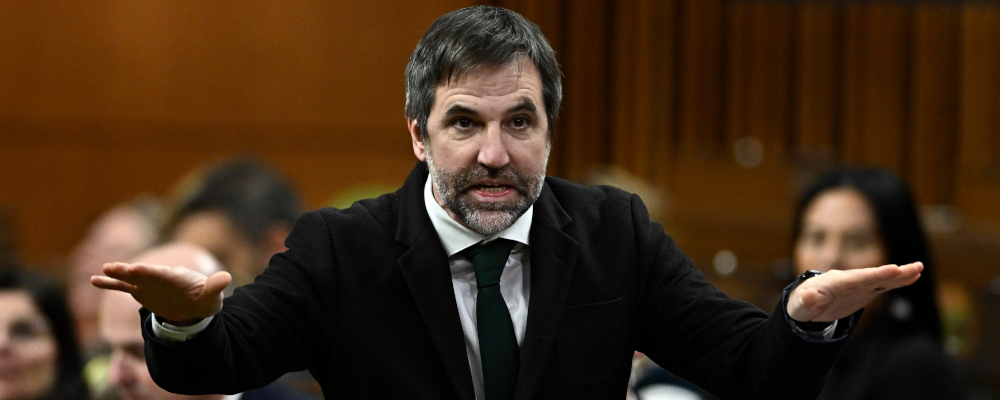What’s being touted as an emissions cap on the oil and gas sector has significant potential to become a prosperity cap for Canadians and Indigenous communities.
When you first hear of a cap on oil and gas emissions, you might think “What’s wrong with a cap on emissions?” Energy is a high-emitting sector that says it is working hard to reduce emissions, so why would this be a problem?
The recently released Regulatory Framework for an Oil and Gas Sector Greenhouse Gas Emissions Cap is problematic for two main reasons: the first is that it fails a reasonableness test on sound public policy; but more importantly, it has high potential to create significant unintended consequences on prosperity because instead of capping emissions, it will likely cap prosperity through deterred investment and a potential production cut. Let’s tackle this first.

Most Canadians are supportive of decreasing pollution and GHG emissions, and I am too. But not at the price of a lower standard of living. The inaccurate and unrealistic assumptions used to develop the cap will deter investment given its complexity and uncompetitiveness. No other country in the world has placed this kind of limitation on its resource sector. Investment will therefore go elsewhere, and the emissions reductions investments in Canada will not occur, costing jobs, incomes, and tax revenues.
Even more negatively, the cap may very likely force the oil and gas sector to cut production to comply and avoid jail time (yes, potential jail time). Fewer fossil fuels will be produced. “What’s wrong with that?” you might ask. Well, given the size of the sector to our prosperity, there’s a lot wrong with that.
The oil and gas sector is by far Canada’s largest economic sector, larger than the automotive and banking sectors combined, in terms of GDP. It is the largest component of Canada’s exports, accounting for about 30 percent of the value of all activity. And it represents $12 billion in annual federal and provincial revenues.
The Conference Board of Canada recently modeled the impact of production cuts because of the cap. They found that it would lead to a one-time but permanent drop in Canadian economic activity of $22-40 billion. That is the provincial budgets of Saskatchewan and Nova Scotia combined. The report also noted that 82,000-152,000 jobs would be lost across many sectors and across the country. Wages would drop by an equivalent of $22,600 for every working Canadian. But, most importantly for broad prosperity, federal government revenues would decline $82-150 billion cumulatively between 2030 and 2040. That means fewer public services, less money for health care, social programs, and the well-being of Canadians. That is how a production cap becomes a prosperity cap.

All this will drive public tension. Much of the stress in Canadian society now is being driven by affordability issues. People are struggling to pay for food, rent, and necessities. For many Canadians, the idea of buying a home seems out of reach, people feel they might end up worse off than their parents, and many also feel poorer than they did a few short years ago. And they are right. Canadians’ standard of living has been stagnant for years and is currently below 2018 levels—and falling. A recent comparison of the top 26 countries in the world found that Canada ranks third from last in terms of real prosperity for average people: measured as how much you can buy for every hour worked (per capita GDP, purchasing power parity, adjusted for hours worked, for the economist crowd).
On the second broad critique, the cap is simply poorly crafted public policy. Good public policy is clear, efficient, fair, competitive, and doesn’t pick winners and losers. This policy fails every one of those tests. It is an unnecessary and punitive layer on top of Canada’s existing carbon pricing scheme, which has been endorsed by industry and the country’s most prominent and thoughtful economists and experts. The limits are based on unrealistic production projections and assumptions regarding the build-out of emissions reductions technologies and investments.
Sadly, it will serve to continue the tension between Alberta and the federal government since it is mostly oriented towards a single industrial activity largely happening in one part of the country. Finally, and more tragically, it will penalize Indigenous communities wanting to build a better future by participating in Canada’s resource sector opportunities. This list of policy assumptions, conditions, and likely outcomes gets a failing grade.
Instead, Canada’s emissions reduction policy should follow five key principles: cost-efficiency; simplicity and clarity; sector agnostic; regional fairness; and globally competitive. The federal government needs to scrap the proposed cap and go back to the drawing board using these key principles.
Recommended for You

‘It’s really important that we make mining fashionable again’: Ken Ash on why mining is essential to creating a happy and secure Canada

DeepDive: The Kananaskis agenda: An action plan for natural gas

Heather Exner-Pirot: No, we’re not done building pipelines in Canada

DeepDive: A new strategy for resilient global leadership in natural resources and manufacturing



